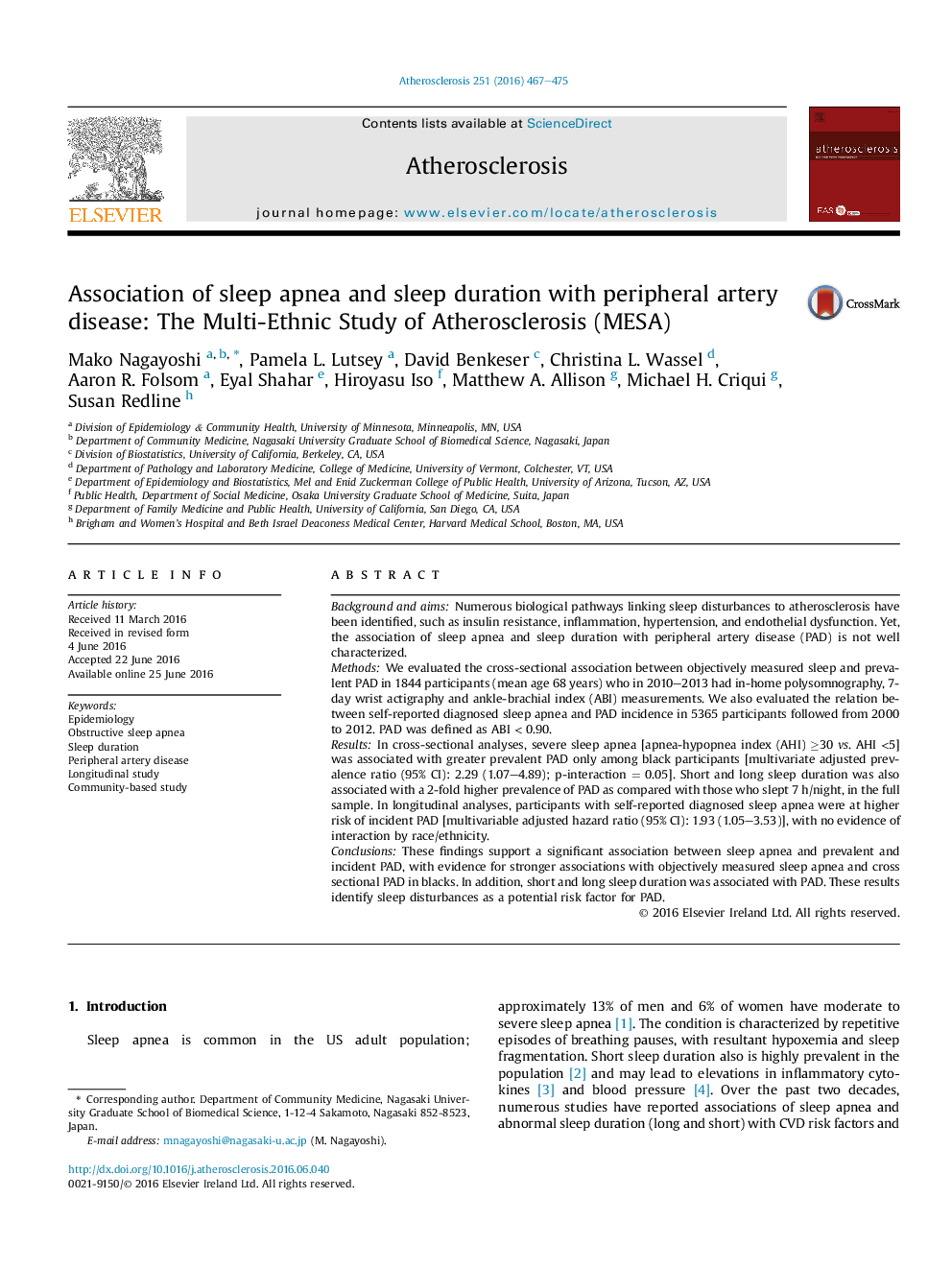| Article ID | Journal | Published Year | Pages | File Type |
|---|---|---|---|---|
| 5942744 | Atherosclerosis | 2016 | 9 Pages |
â¢Sleep apnea is a potential, modifiable risk factor for peripheral artery disease.â¢Self-reported sleep apnea was associated with greater risk of developing PAD.â¢Objectively measured long/short sleep duration was associated with prevalent PAD.
Background and aimsNumerous biological pathways linking sleep disturbances to atherosclerosis have been identified, such as insulin resistance, inflammation, hypertension, and endothelial dysfunction. Yet, the association of sleep apnea and sleep duration with peripheral artery disease (PAD) is not well characterized.MethodsWe evaluated the cross-sectional association between objectively measured sleep and prevalent PAD in 1844 participants (mean age 68 years) who in 2010-2013 had in-home polysomnography, 7-day wrist actigraphy and ankle-brachial index (ABI) measurements. We also evaluated the relation between self-reported diagnosed sleep apnea and PAD incidence in 5365 participants followed from 2000 to 2012. PAD was defined as ABI < 0.90.ResultsIn cross-sectional analyses, severe sleep apnea [apnea-hypopnea index (AHI) â¥30 vs. AHI <5] was associated with greater prevalent PAD only among black participants [multivariate adjusted prevalence ratio (95% CI): 2.29 (1.07-4.89); p-interaction = 0.05]. Short and long sleep duration was also associated with a 2-fold higher prevalence of PAD as compared with those who slept 7 h/night, in the full sample. In longitudinal analyses, participants with self-reported diagnosed sleep apnea were at higher risk of incident PAD [multivariable adjusted hazard ratio (95% CI): 1.93 (1.05-3.53)], with no evidence of interaction by race/ethnicity.ConclusionsThese findings support a significant association between sleep apnea and prevalent and incident PAD, with evidence for stronger associations with objectively measured sleep apnea and cross sectional PAD in blacks. In addition, short and long sleep duration was associated with PAD. These results identify sleep disturbances as a potential risk factor for PAD.
